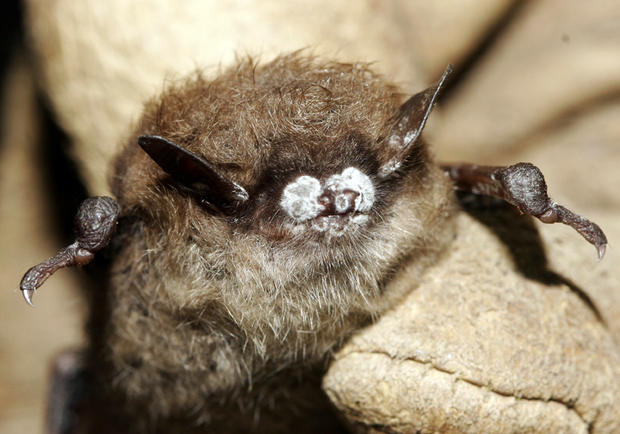Bats' future hangs in the balance as deadly disease spreads
Bats are dying across North America, with a loss of nearly 6 million since 2007.
Hibernia Mines was once the largest bat hibernation spot in New Jersey, where as many as 30,000 bats would spend their winters.
But a recent count found fewer than 400 clinging to these cave walls, most dead from white-nose syndrome. Now, this spot and others are sealed off to the public as that disease and its devastation spreads west, CBS News correspondent Don Dahler reports.
Jackie Kashmer hand feeds little brown bats every day.
"You're a good boy, Squeak. That's how you get fat Squeaky," Kashmer told Squeak, one of the thirty bats she is currently nursing back to health.
Since 2009, hundreds of bats have been brought to the bat sanctuary she runs in New Jersey. They were all dying from a fungal infection called white nose syndrome.
White-nose syndrome kills bats two ways: It destroys the fragile tissue of their wings, making it impossible to fly and to hunt insects, and it causes so much discomfort while they're hibernating that it wakes them up, burning precious calories and forcing them outside in the dead of winter, where they die of starvation.
Kashmer believes she's found the magic remedy: a mild vinegar solution that kills the fungus. She says that if the infected caves are sprayed with this solution, the disease may be halted, but so far no government agency is willing to try, meaning the bats will keep dying.
"This is the most devastating wildlife disease that I know of," said Boston University graduate student Aryn Wilder
She is trying to find out where the disease is going next.
"We can use this information to tell us how bat populations are connected and how white-nose might move through the population," she said.
Scientists traced the problem to the Howe Caverns in New York State, where they believe in 2006 a tourist accidentally infected the cave with a fungus native to Europe.
From there, the disease spread from bat to bat at a terrifying rate. It's been found in 25 states. This month, Arkansas sealed its caves to try and stop the fungus.
Bats can eat half their body weight every day, about a thousand gnats, mosquitoes and flying bugs. If you multiply that by at least six million fewer bats, that's billions of bugs that are not getting eaten.
"Many of these insects are crop pests that cost farmers millions of dollars a year in insecticide applications," said Steve Henry, acting manager of the Great Swamp National Wildlife Refuge in New Jersey.
Henry and his team have seen a drastic reduction in the populations of certain species of bats.
As far as extinction goes, he told CBS News, "I think there are species of bats that are perilously close."
Kashmer says some bat species could be gone for good.
"I think they're are all going to be endangered, extremely endangered. And they're not going to come back in our lifetime," she said.
